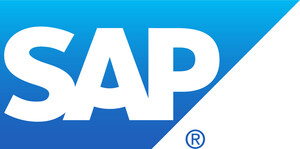WALLDORF, Germany, July 14, 2014 /PRNewswire/ --Insurers are seeking speed and agility throughout their infrastructure for innovative product development and an enhanced customer experience, reveals a survey by SAP SE (NYSE: SAP). The survey of 200 insurance executives at the IASA Annual Conference held in June found a number of factors motivating insurers' innovation strategies. Thirty-four percent of respondents indicated that rising consumer expectations are their primary driver for new product development, followed by changing regulatory demands (22 percent) and availability of new technologies (20 percent).
Insurers are in agreement that the growing customer base of millennials — generally considered those born between the early 1980s to the late 1990s — has heightened expectations for their carriers. Fifty-five percent of respondents cited convenience as millennials' top priority when seeking insurance products, with low cost (22 percent) and relationships with their agent (16 percent) followed by brand recognition (8 percent).
This has forced many insurers to consider a more adaptable product strategy. More than half (52 percent) of respondents noted that their primary strategy to reach millennials has focused on investing in online, mobile and social technologies to reach customers across channels. Twenty-one percent indicated they are tailoring products to suit millennials' unique needs and 12 percent are investing in data analytics to segment and target communications.
Yet while insurers remain focused on the customer experience, updating their back-end infrastructure continues to be a priority as they seek to inject agility and speed throughout their processes. Fifty-one percent of respondents indicated their organization has adopted cloud computing in some capacity. While nearly half of these respondents have implemented cloud-based systems for back-office functions — anecdotally citing HR, accounting and procurement — others have adopted cloud for mission-critical functions like policy administration (18 percent), product development (seven percent), claims processing (six percent) and risk management (six percent).
"Cloud computing has matured and we're seeing insurers shift from leveraging the cloud for just back-office functions to implementing cloud across the entire organization," said Ross Orrett, global head of Insurance Industry Innovation and Development, SAP. "Insurers are becoming more adaptable and laser-focused on meeting changing customer needs. To be innovative in its products and the way it serves agents/brokers and customers to meet these demands, carriers are investing in industrializing the back-end with integrated, agile infrastructure while innovating across these systems."
Insurers also acknowledged the barriers to cloud adoption in their organizations. One-third of respondents (34 percent) cited security concerns as the primary challenge for adopting cloud computing. Lack of internal buy-in was another key factor (28 percent), followed by budget and financial concerns (13 percent), unstable technological infrastructure (13 percent) and lack of time (12 percent).
For more information, visit the SAP News Center. Follow SAP on Twitter at @sapnews.
Methodology
The survey was conducted via in-person interviews held at the 2014 IASA Annual Conference in Indianapolis, IN, from June 8-10, 2014. The sample includes 200 insurance executives in both life and health and property and casualty who attended the conference.
Media Contacts:
Crystal Lu, SAP, +1 (650) 455-0755, [email protected], PDT
Jamie Kloss, Prosek Partners, +1 (203) 254-1300, [email protected], EDT
Any statements contained in this document that are not historical facts are forward-looking statements as defined in the U.S. Private Securities Litigation Reform Act of 1995. Words such as "anticipate," "believe," "estimate," "expect," "forecast," "intend," "may," "plan," "project," "predict," "should" and "will" and similar expressions as they relate to SAP are intended to identify such forward-looking statements. SAP undertakes no obligation to publicly update or revise any forward-looking statements. All forward-looking statements are subject to various risks and uncertainties that could cause actual results to differ materially from expectations. The factors that could affect SAP's future financial results are discussed more fully in SAP's filings with the U.S. Securities and Exchange Commission ("SEC"), including SAP's most recent Annual Report on Form 20-F filed with the SEC. Readers are cautioned not to place undue reliance on these forward-looking statements, which speak only as of their dates.
Logo - http://photos.prnewswire.com/prnh/20110126/AQ34470LOGO
SOURCE SAP SE
WANT YOUR COMPANY'S NEWS FEATURED ON PRNEWSWIRE.COM?
Newsrooms &
Influencers
Digital Media
Outlets
Journalists
Opted In




Share this article